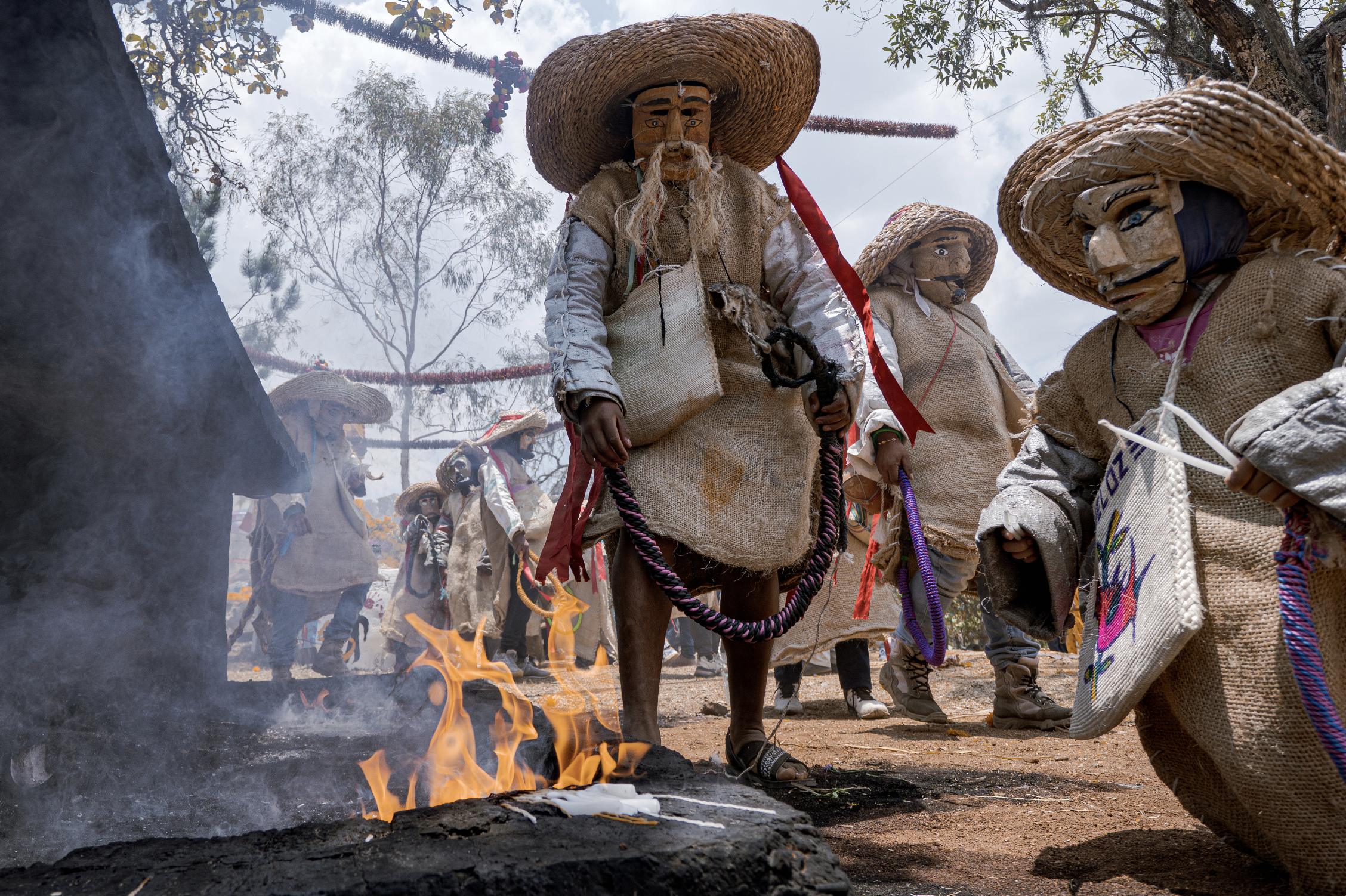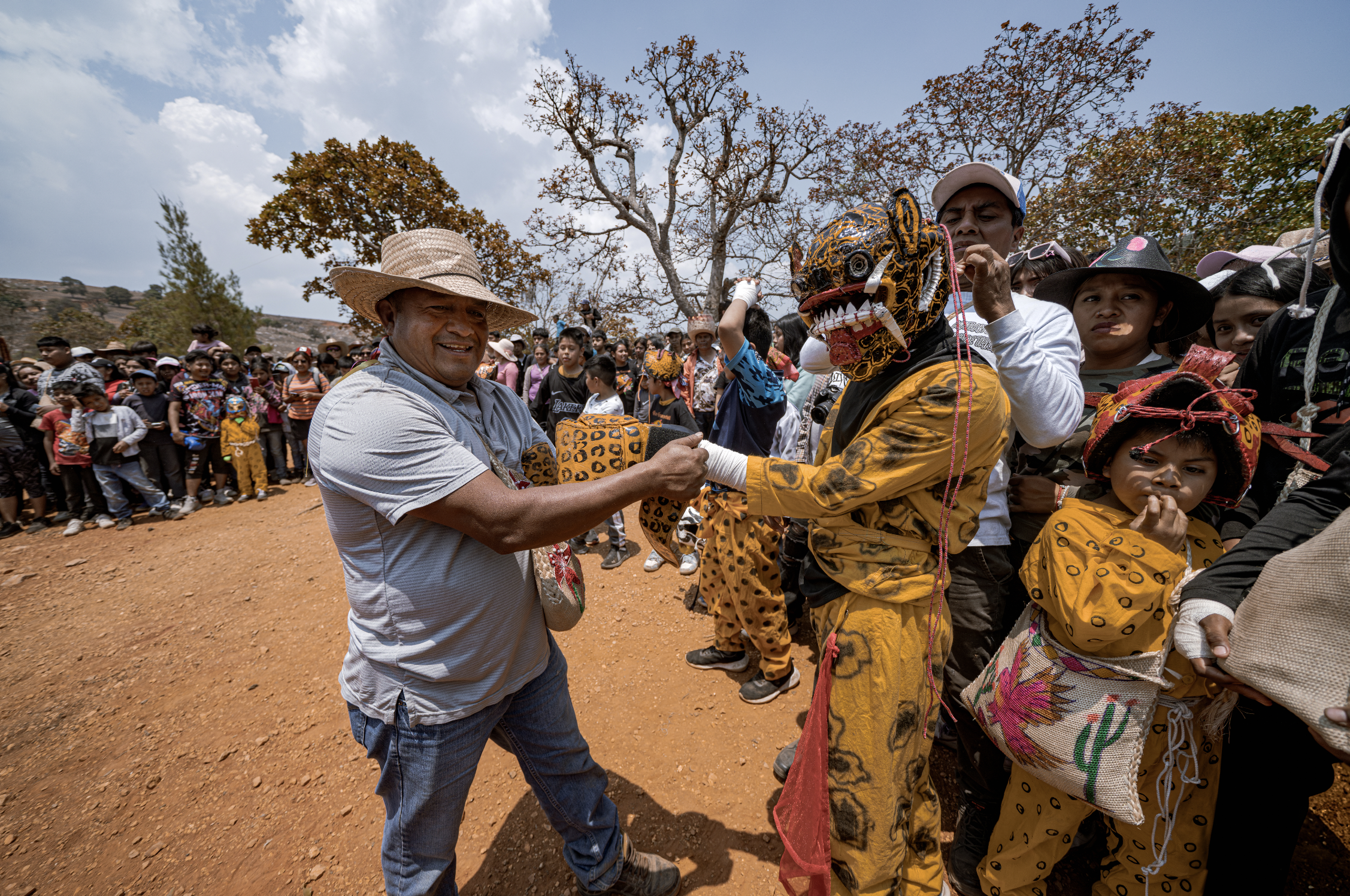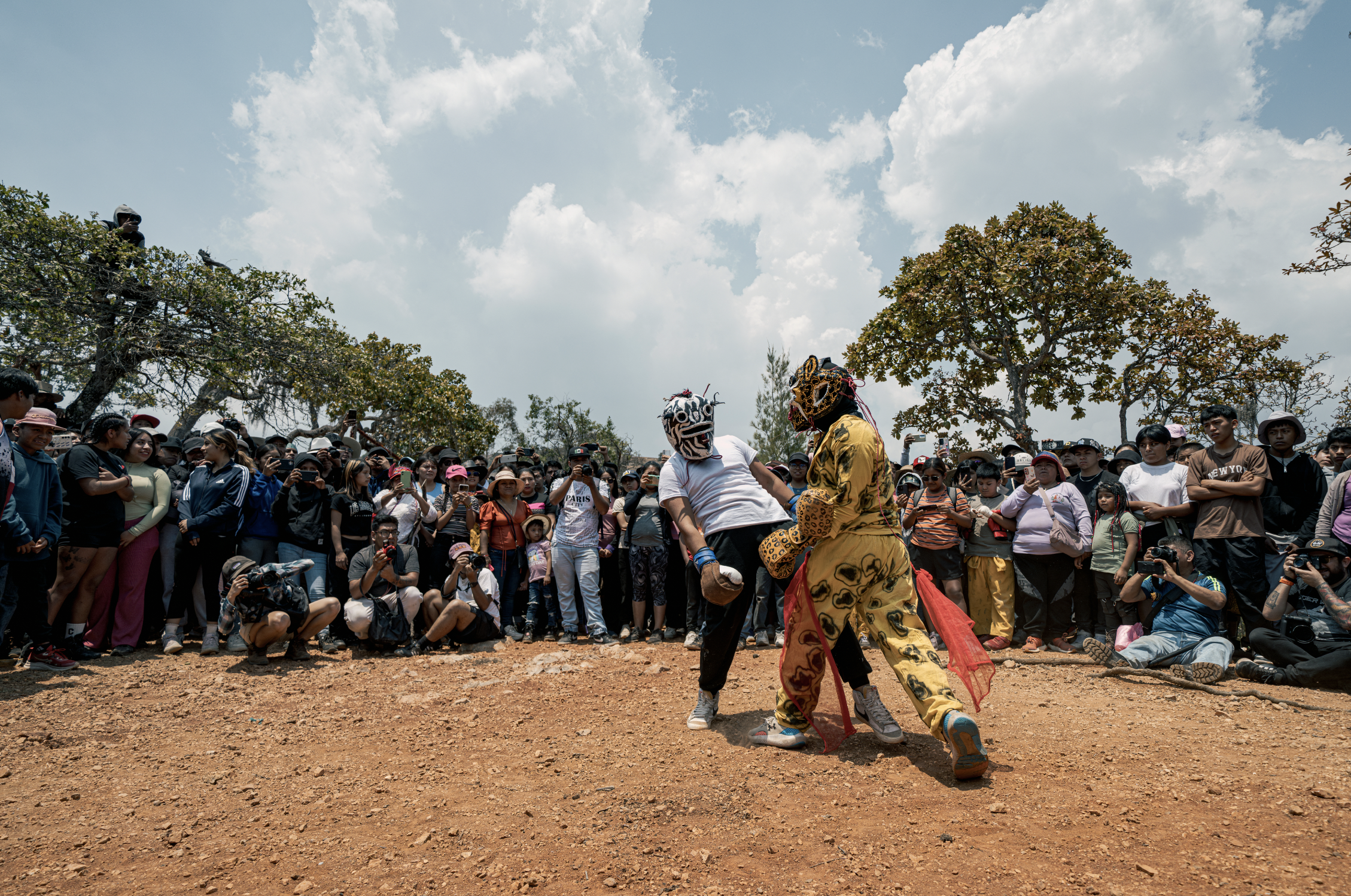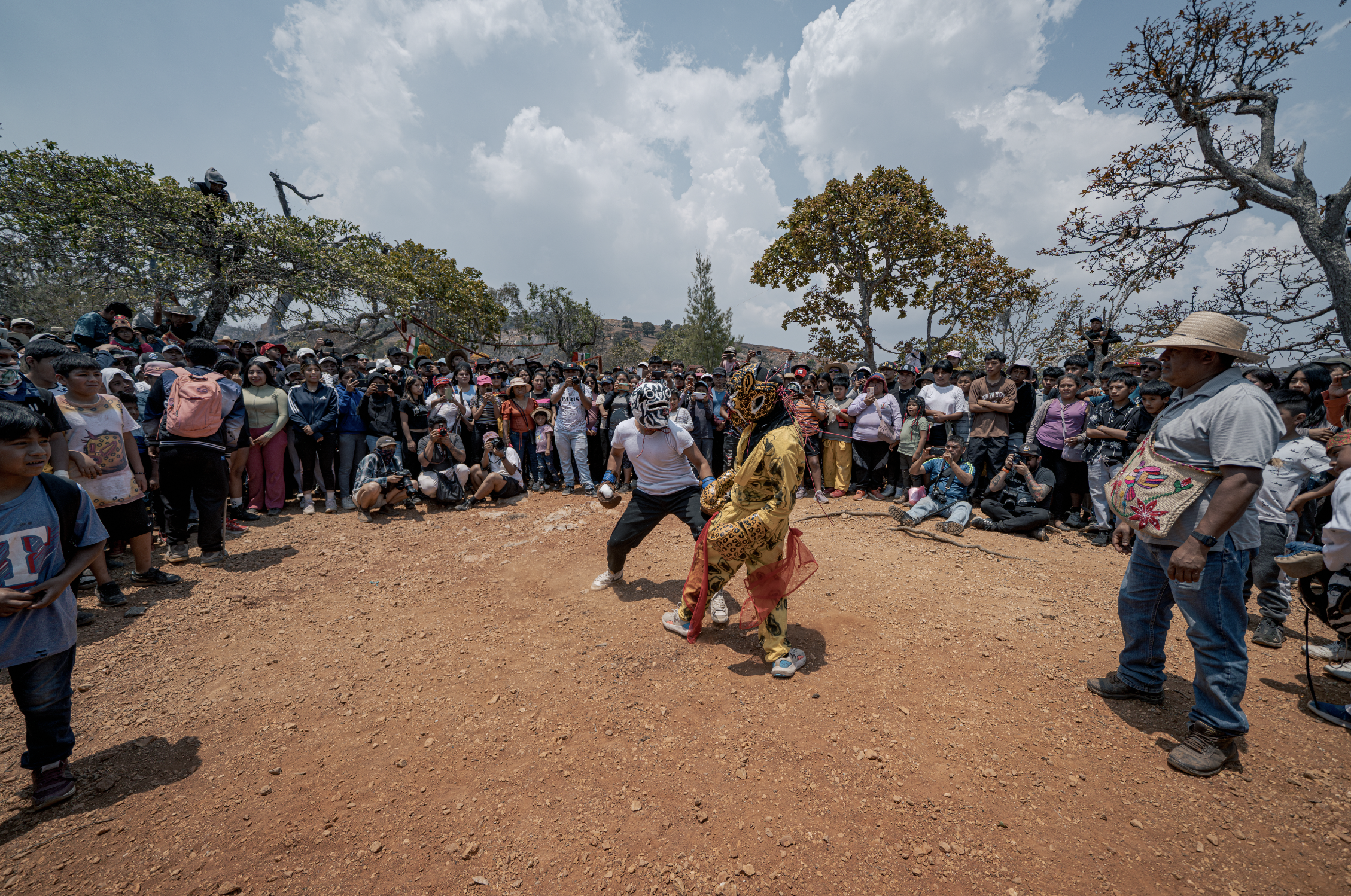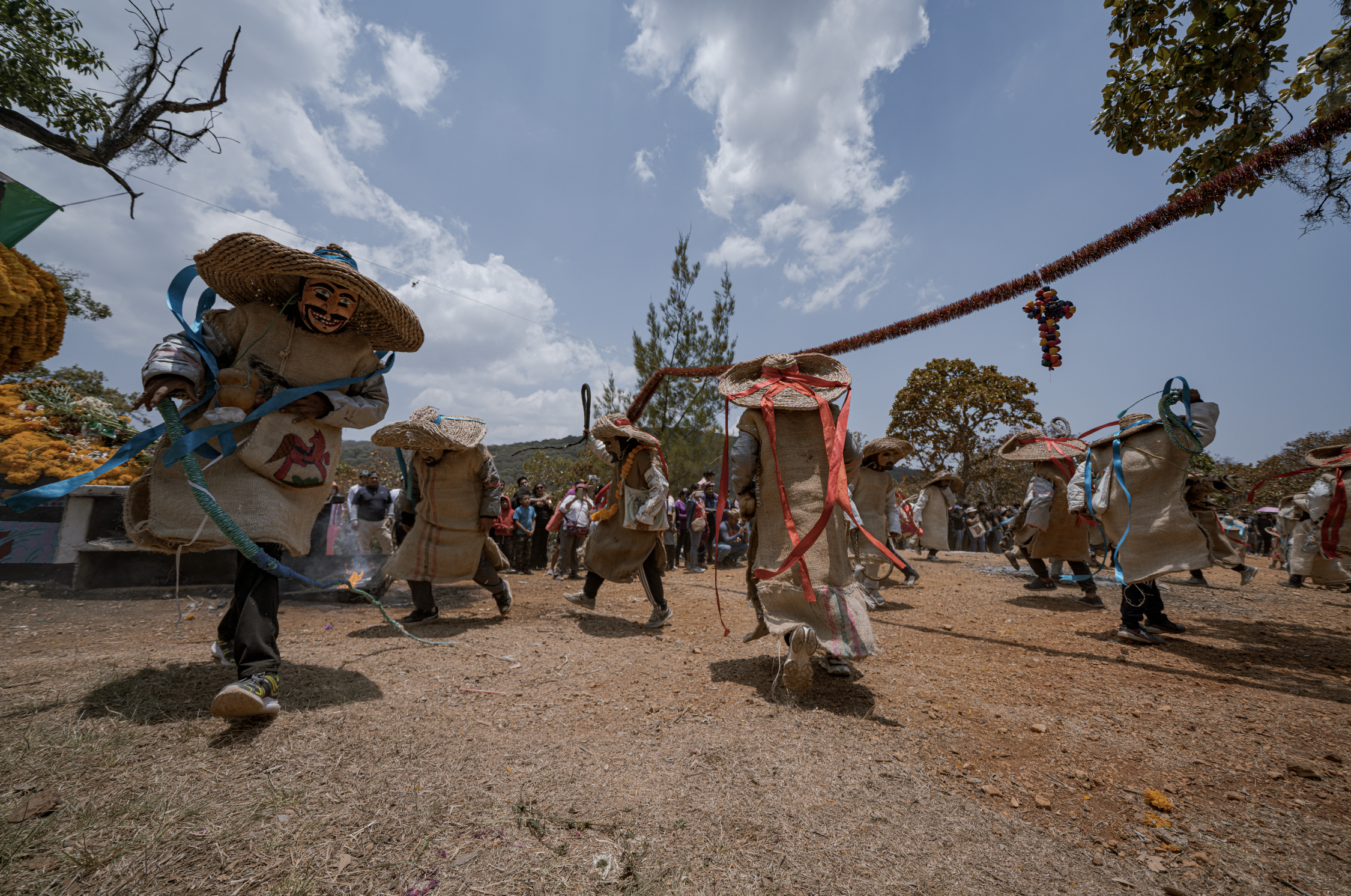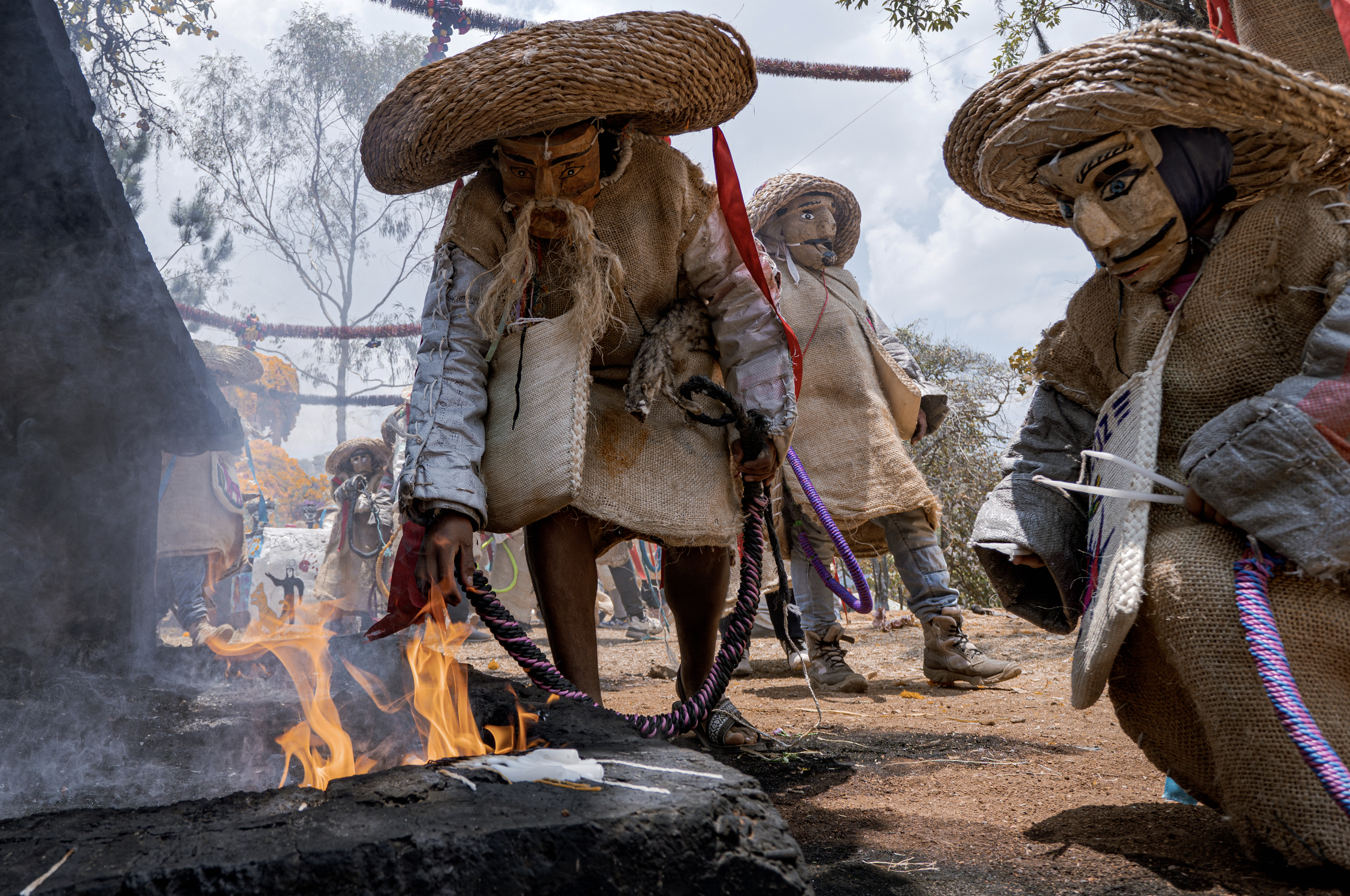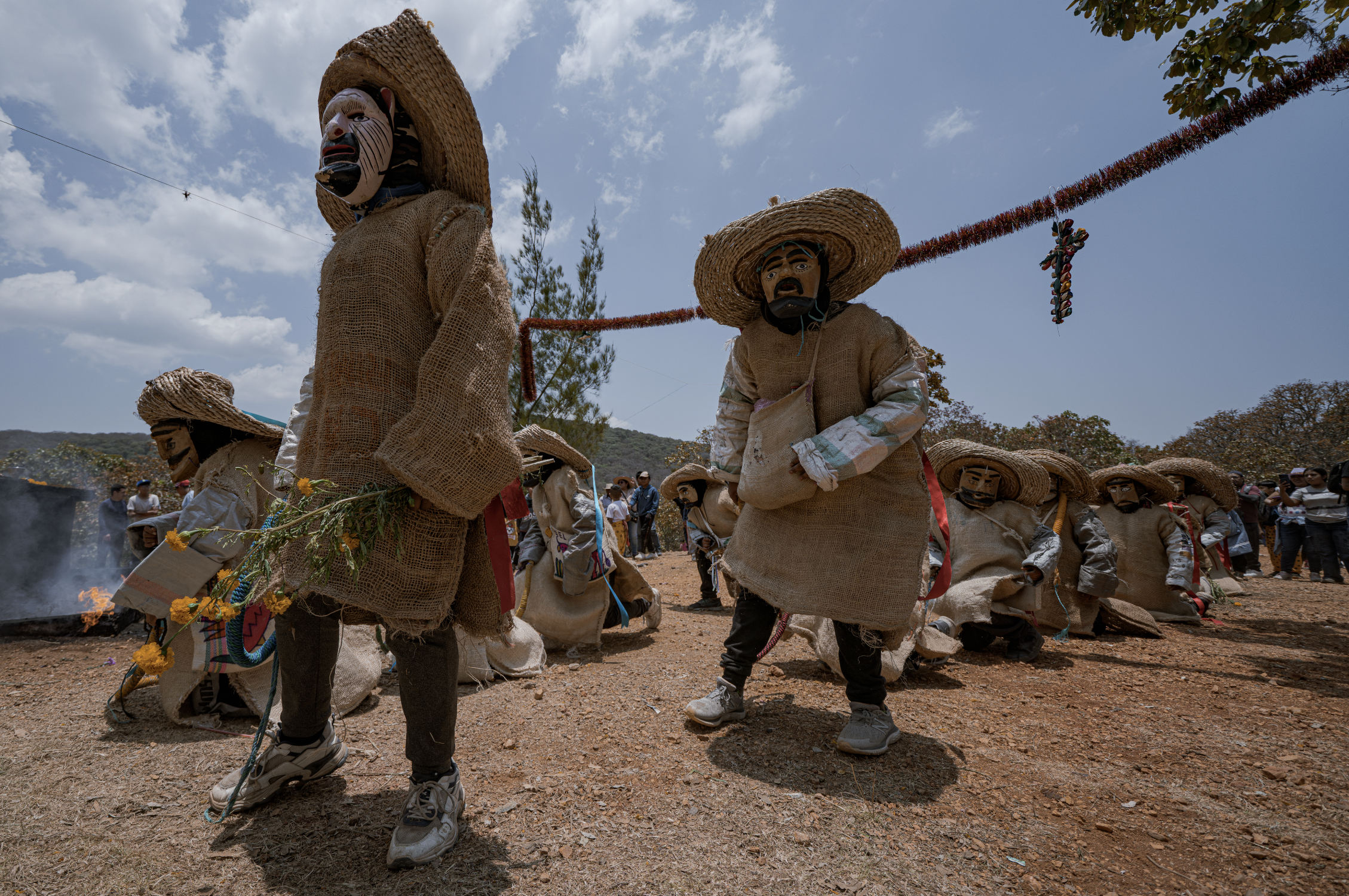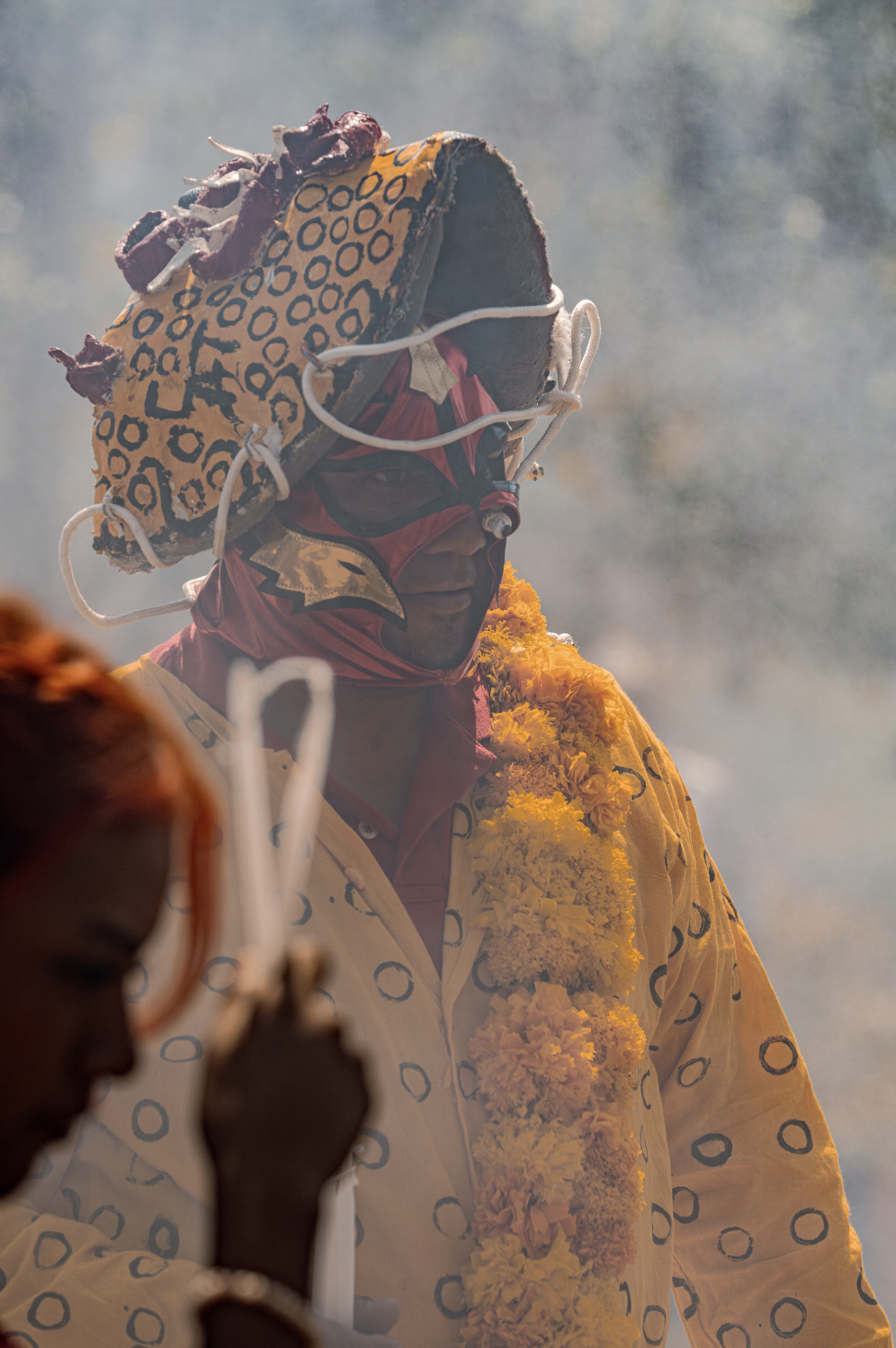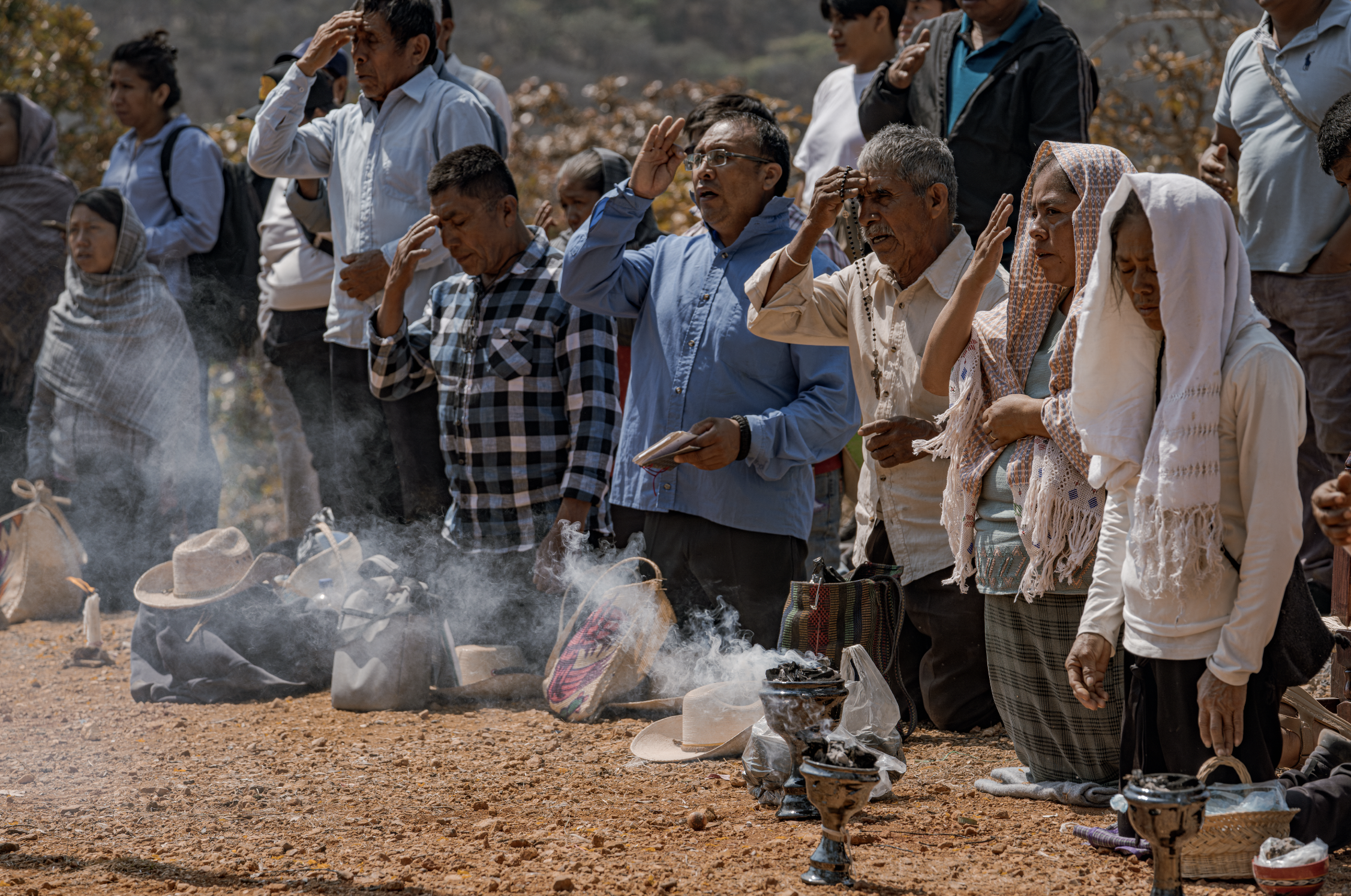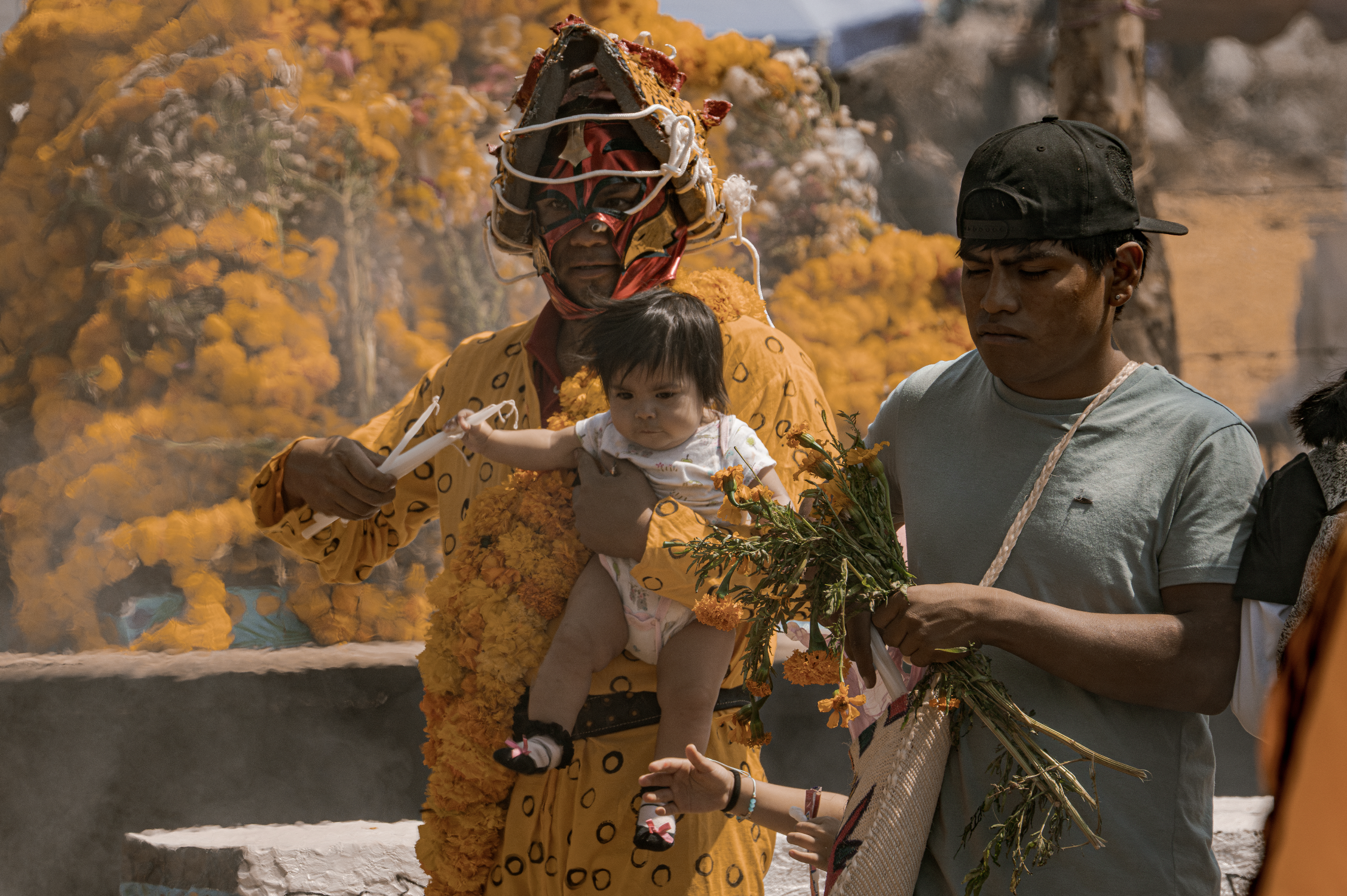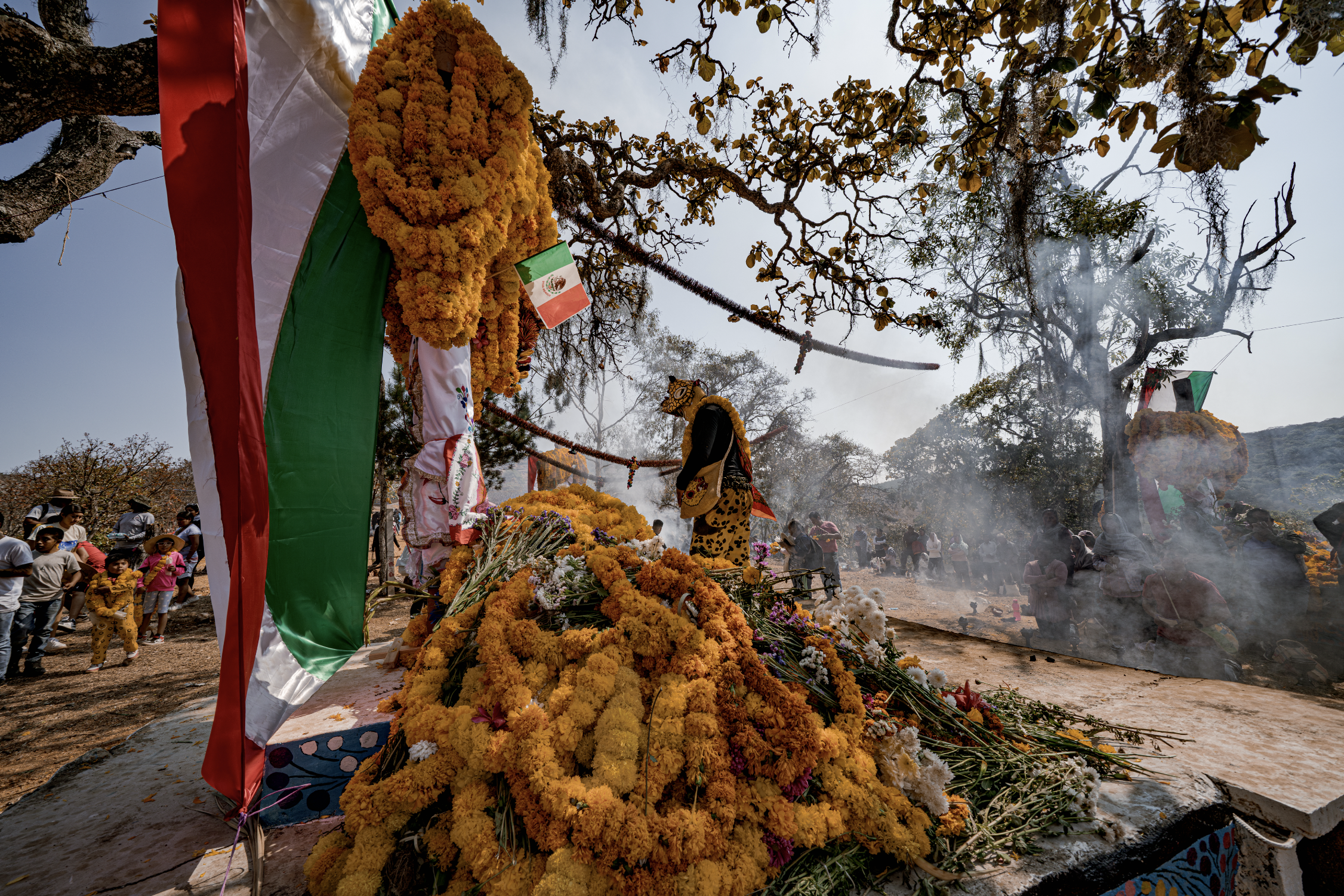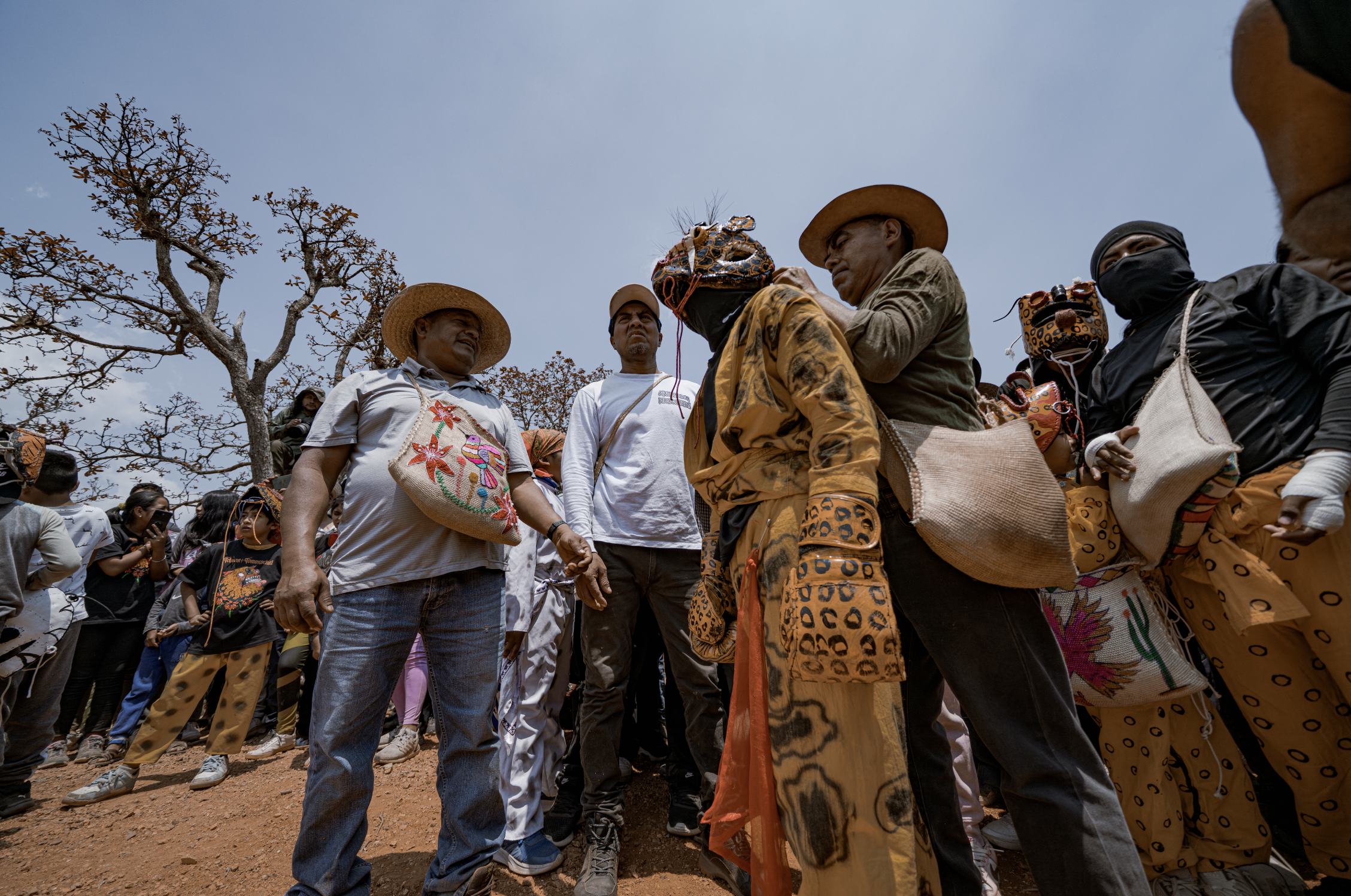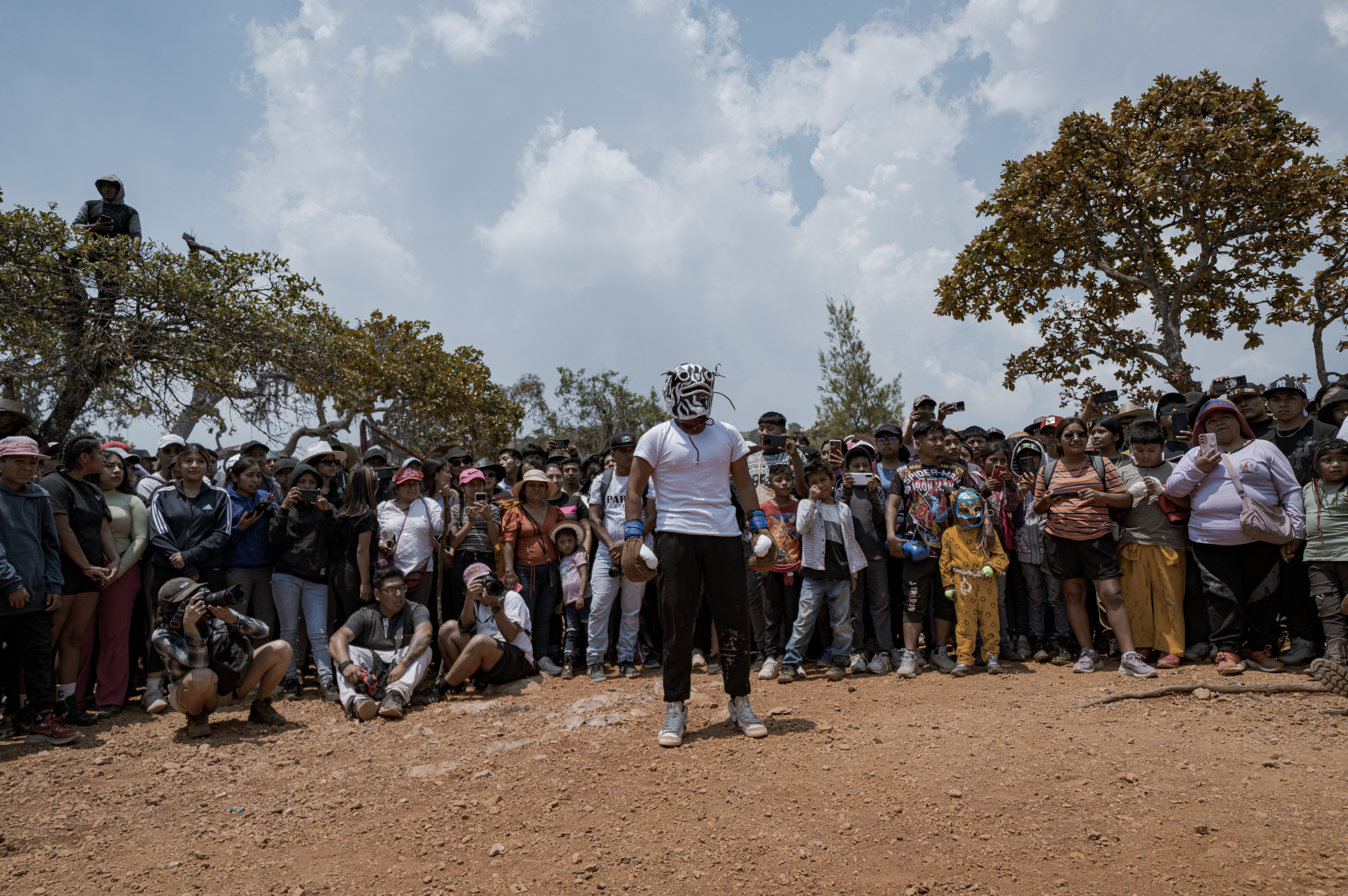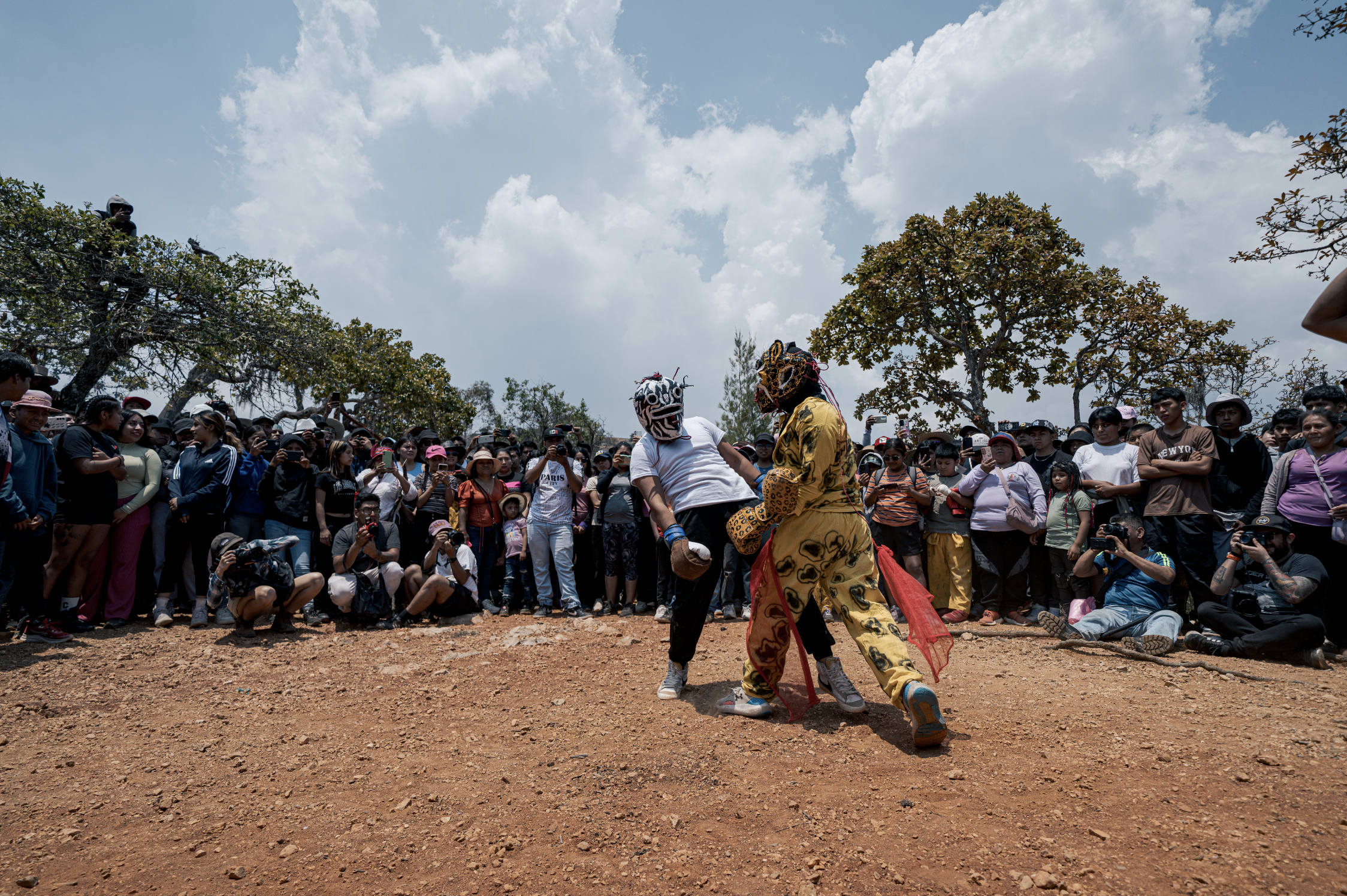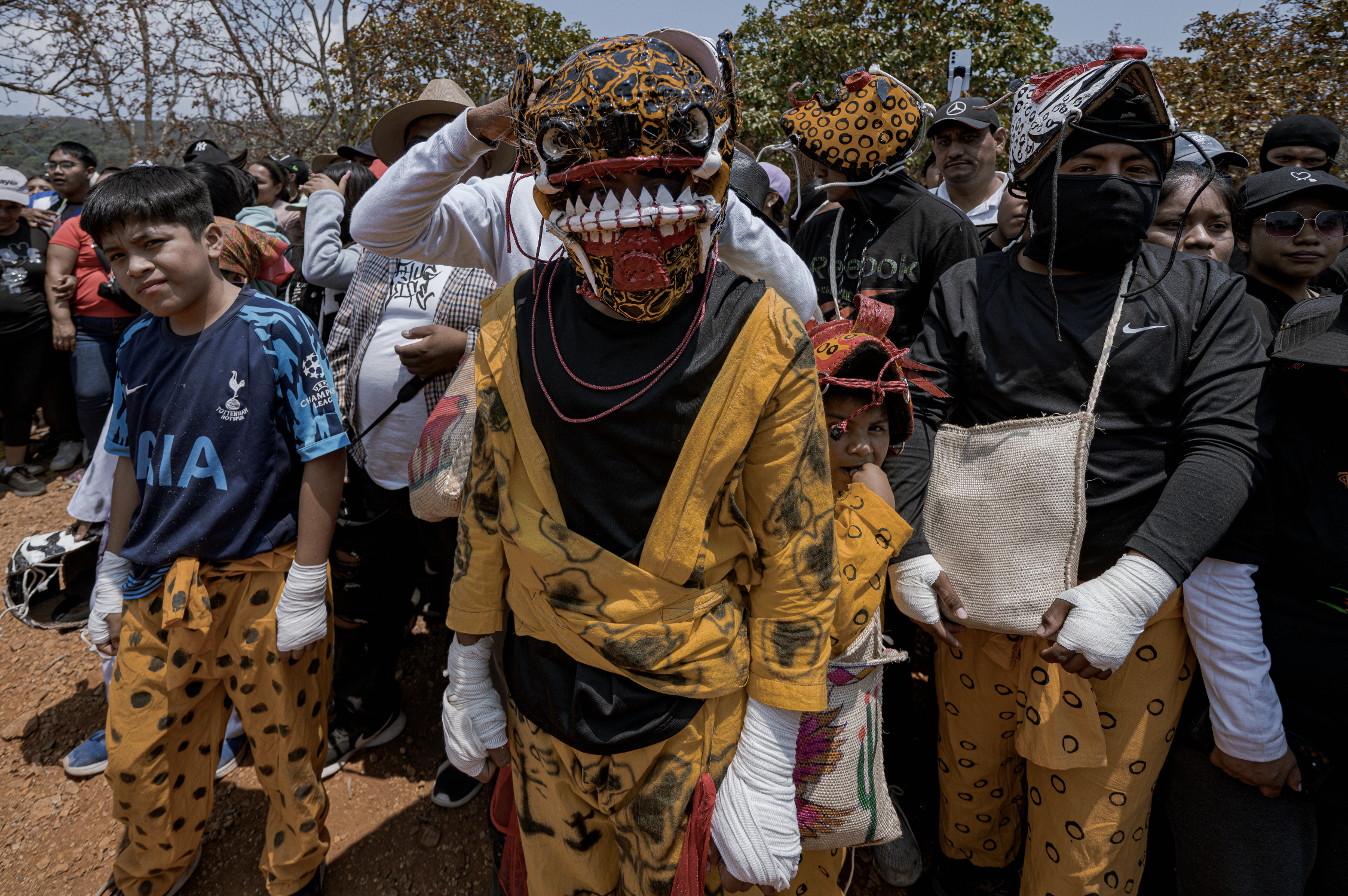PETICIÓN DE LLUVIAS Y PALEAS DE TIGRES
In the Montaña Baja region of Guerrero, the Petición de Lluvias is a ceremonial tradition rooted in Tlapaneco and Nahua agricultural cosmology. Performed in late April or early May before the onset of the rainy season, these rituals are a collective plea to the deities for rain and fertile conditions. Communities gather to make offerings—often including copal, food, and live animals such as chickens or turkeys—to sacred hills, springs, or caves considered dwelling places of rain gods or ancestral spirits. The ceremony is marked by music, dances, prayers, and the participation of ritual specialists, such as tiempateros or mayordomos, who serve as intermediaries between the community and the divine forces that govern nature.
The Paleas de Tigres are dramatic ritual combats held in some towns during these ceremonies, symbolizing the struggle to summon rain. Dancers dressed in jaguar costumes—typically made of sackcloth with painted faces and leather masks—engage in one-on-one battles. The jaguar is a sacred rain-bringer in Mesoamerican cosmology, and the blood shed during these fights is believed to feed the earth and please the rain gods. Far from mere spectacle, these paleas serve both ritual and communal functions, reinforcing social bonds, honoring ancestral traditions, and aligning human life with the cycles of the land.
En la región de la Montaña Baja de Guerrero, la Petición de Lluvias es una ceremonia profundamente arraigada en las comunidades indígenas Mè’phàà y nahuas. Se realiza cada año justo antes del inicio del temporal, cuando la tierra aún espera las primeras lluvias. La gente sube a cerros sagrados o se reúne en manantiales y cuevas para hacer ofrendas a los dioses de la lluvia: copal, tamales, animales, y oraciones colectivas que buscan armonizar el mundo humano con el natural. Participan autoridades tradicionales como los tiempateros o mayordomos, quienes guían el ritual con cantos, rezos y limpias, pidiendo que el ciclo agrícola venga cargado de vida y alimento.
Dentro de estas festividades, en algunos pueblos se llevan a cabo las Paleas de Tigres, enfrentamientos rituales entre hombres disfrazados de jaguar, animal sagrado asociado con la lluvia. Con máscaras de cuero y trajes pintados a mano, los combatientes se azotan con cuerdas trenzadas en un duelo simbólico que representa la lucha por traer el agua. La sangre que corre se considera una ofrenda a la tierra, una forma de nutrirla y de mantener vivo el vínculo espiritual con los elementos. Aunque tiene un tono festivo, la ceremonia conserva un profundo respeto por los ciclos de la naturaleza y por la memoria de los antepasados.
